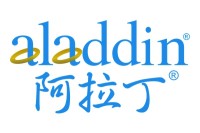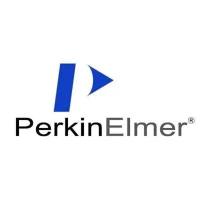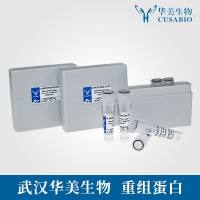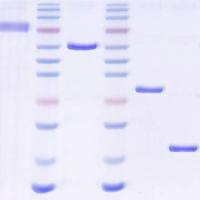LipidXplorer: Software for Quantitative Shotgun Lipidomics Compatible with Multiple Mass Spectrometry Platforms
互联网
- Abstract
- Table of Contents
- Figures
- Literature Cited
Abstract
LipidXplorer is an open?source software kit that supports the identification and quantification of molecular species of any lipid class detected by shotgun experiments performed on any mass spectrometry platform. LipidXplorer does not rely on a database of reference spectra: instead, lipid identification routines are user defined in the declarative molecular fragmentation query language (MFQL). The software supports batch processing of multiple shotgun acquisitions by high?resolution mass mapping, precursor and neutral?loss scanning, and data?dependent MS/MS lending itself to a variety of lipidomics applications in cell biology and molecular medicine. Curr. Protoc. Bioinform . 43:14.12.1?14.12.30. © 2013 by John Wiley & Sons, Inc.
Keywords: mass spectrometry; shotgun lipidomics; MS/MS; LipidXplorer; lipid identification; lipid quantification; lipidomics screen
Table of Contents
- Introduction
- Strategic Planning: Supported File Formats
- Basic Protocol 1: Installing LipidXplorer
- Support Protocol 1: File Conversion Using MSConvert
- Basic Protocol 2: Basic Lipid Identification Workflow
- Basic Protocol 3: Composing MFQL Queries for Top‐Down Shotgun Lipidomics
- Basic Protocol 4: Composing MFQL Queries for Bottom‐Up Shotgun Lipidomics
- Basic Protocol 5: Composing MFQL Queries for Lipid Identification by Neutral Loss Fragments
- Basic Protocol 6: Troubleshooting Lipid Identifications
- Guidelines for Understanding Results
- Commentary
- Literature Cited
- Figures
Materials
Figures
-
Figure 14.12.1 Basic LipidXplorer workflow. (1) Shotgun MS and MS/MS spectra acquired from all samples in the experiment series are imported into a MasterScan database. All scans of each acquisition are averaged into a single representative spectrum. All related spectra are subsequently aligned in an experiment‐ and mass spectrometer–dependent manner and stored in the MasterScan database. (2) Lipids are identified by probing MasterScan with queries written in the Molecular Fragmentation Query Language (MFQL). In this way, lipid identification relies on specific reporter ion(s) detected in MS and/or MS/MS spectra; in the latter scenario, writing MFQLs requires the knowledge of major fragmentation pathways expected for a given lipid class; however, it does not require a resource of reference spectra. View Image -
Figure 14.12.2 File structure for importing spectra in peak list format. View Image -
Figure 14.12.3 A screenshot of the MSConvert GUI. MSConvert is the preferred conversion tool to generate *.mzXML or *.mzML data files that are compatible with LipidXplorer. Essential settings are circled. Select the files to convert using Browse and target data format by “Output format:”. Choose 32‐bit encoding precision. If spectra were acquired in the profile mode, select the Peak Picking option and click Add. The 1‐ under the filter name indicates that all spectra should be converted. View Image -
Figure 14.12.4 Import settings panel. All necessary settings for importing spectra are controlled here; they are explained in detail in the appendix at the end of the unit. View Image -
Figure 14.12.5 Run panel controls screening the MasterScan with MFQL queries. Several MFQLs can be applied in parallel. View Image -
Figure 14.12.6 Lipids identified in the collection of tutorial spectra. The lipid naming convention and the content of each column is defined in a MFQL query. The results of the queries are separated by ### and the query name. View Image -
Figure 14.12.7 Chemical structure of phosphatidylethanolamine (PE) species (PE 16:0/16:1 is shown here as an example). The phosphoethanolamine head group (highlighted) defines the lipid class, while the structural variability within the class originates from varying the lengths (number of carbon atoms) and unsaturation (number of double bonds) at the two fatty acid moieties. View Image -
Figure 14.12.8 Screenshot of the MFQL query in the LipidXplorer editor. This query identifies PE anions by their accurate masses and is typically used in top‐down lipidomic screens. View Image -
Figure 14.12.9 Screenshot of the output file with PE identified by top‐down shotgun analysis according to . Since PE were only identified by matching their masses in survey (MS) spectra, fatty acid moieties were not determined, and species are annotated by the lipid class (PE) and total number of carbon atoms and double bonds in both fatty acid moieties (see Figure for the PE chemical structure). For the subsequent quantification, LipidXplorer reports isotopically corrected intensities of monoisotopic peaks of their molecular anions. View Image -
Figure 14.12.10 MFQL query for the identification of molecular species of phosphatidylethanolamines (PE) by bottom‐up shotgun lipidomics. The cartoon at the top right shows a survey (MS) spectrum; the precursor ion with m / z 688.5 (boxed) was subjected to MS/MS (spectrum below) in which four peaks can be assigned to acyl anions of fatty acids: m / z 227.2: FA 14:0; m / z 253.2: FA 16:1; m / z 255.2: FA 16:0; and m / z 281.2: FA 18:1. However, only two pairs of fatty acids: (FA 16:1;FA 16:0) and (FA 14:0; FA18:1) might satisfy the SUCHTHAT requirement (Figure ). For clarity, “building blocks” of the PE 16:0/16:1 chemical structure are shown at the bottom right: note that fatty acid moieties are readily detectable as acyl anions, whereas the phosphoethanolamine head group and glycerol backbone are not. Their combined sum composition (C5 H11 O4 N1 P1) is used in the SUCHTHAT section to complement the sum compositions of FA1 and FA2 moieties. View Image -
Figure 14.12.11 Screenshot of the output of the identification of PE by bottom‐up shotgun analysis according to . Here, individual molecular species of PE were identified by matching the masses of intact precursor in MS survey spectra and acyl anions of fatty acid moieties in MS/MS spectra. On multiple occasions, this analysis identified several PE species sharing the same number of carbon atoms and double bonds, yet composed of different fatty acids. For the subsequent PE quantification, LipidXplorer reported isotopically corrected intensities of monoisotopic peaks of their molecular anions (PRECURINTENS) and the combined abundances of fatty acid fragments (FASINTENS). The naming convention and output format were defined in the MFQL query of . View Image -
Figure 14.12.12 Screenshot of the MFQL editor panel with the query described in for bottom‐up shotgun identification of PC species in negative ion mode. View Image -
Figure 14.12.13 Screenshot of the results from . Note that MS/MS identified molecular species of PC. Here, isotopically corrected intensities of monoisotopic precursor peaks from MS spectra and intensities of peaks of neutral loss products in MS/MS spectra are reported for lipid quantification. View Image -
Figure 14.12.14 Comparison of the output files produced according to (panel at the left) and (panel at the right): note that ten lipids are now missing. To locate and fix the problem, follow . View Image -
Figure 14.12.15 Screenshot of a MasterScan dump: its header contains the import settings. The content of the MasterScan is shown in Figure . View Image -
Figure 14.12.16 Screenshot of the main part MasterScan dump (screenshots A and B ). Column A reports the acquisition polarity, which is negative in this case. Column B indicates if the peak is taken from MS survey spectrum (and is a precursor) or from MS/MS spectrum (and is a fragment), in which case the column contains a > symbol. For MS/MS, the precursor peak is always placed in the row above the first fragment peak. For example, the peak with m / z 659.947 was not subjected to MS/MS; the next peak with m / z 660.4609 was fragmented and produced ions with m / z 253.261, 255.3188, etc. (in A ). Column D shows the computed sum composition of the precursor, while further columns (E to H) show the intensities of the corresponding precursors and fragment peaks in each acquired sample. The last columns (N and the following) contain labels produced by the MFQL identification process. A label consists of the query name, the variable name, an integer m / z value, the level of the spectra, and the sum composition assigned for this peak. The upper screenshot (A ) shows the precursor with m / z 660.46 of the alternative import. Its fragment spectrum starts with the peak of m / z 253.261 and ends with the peak of m / z 660.405, because the fatty acids with m / z smaller than 253.3 are missing. The bottom screenshot (B ) shows the MasterScan imported with the correct settings. The MS/MS spectrum starts with the peak m / z 199.215 which represents the missing fatty acid fragments (see ). View Image -
Figure 14.12.17 Screenshot of the MS Tools panel. It offers several supporting functions for calculating m / z , sum compositions and isotopic distributions for precursors and fragment ions (see Ejsing et al., ; Herzog et al., , for the algorithm employed). The lower panel shows the example of an isotopic distribution. View Image
Videos
Literature Cited
| Literature Cited | |
| Bligh, E.G. and Dyer, W.J. 1959. A rapid method of total lipid extraction and purification. Can. J. Biochem. Physiol. 37:911‐917. | |
| Carvalho, M., Sampaio, J.L., Palm, W., Brankatschk, M., Eaton, S., and Shevchenko, A. 2012. Effects of diet and development on the Drosophila lipidome. Mol. Syst. Biol. 8:600. | |
| Dennis, E.A. 2009. Lipidomics joins the omics evolution. Proc. Natl. Acad. Sci. U.S.A. 106:2089‐2090. | |
| Deutsch, E. 2008. mzML: A single, unifying data format for mass spectrometer output. Proteomics 8:2776‐2777. | |
| Ejsing, C.S., Duchoslav, E., Sampaio, J., Simons, K., Bonner, R., Thiele, C., Ekroos, K., and Shevchenko, A. 2006. Automated identification and quantification of glycerophospholipid molecular species by multiple precursor ion scanning. Anal. Chem. 78:6202‐6214. | |
| Ejsing, C.S., Sampaio, J.L., Surendranath, V., Duchoslav, E., Ekroos, K., Klemm, R.W., Simons, K., and Shevchenko, A. 2009. Global analysis of the yeast lipidome by quantitative shotgun mass spectrometry. Proc. Natl. Acad. Sci. U.S.A. 106:2136‐2141. | |
| Fernandez, C., Schuhmann, K., Herzog, R., Fielding, B., Frayn, K., Shevchenko, A., James, P., Holm, C., and Strom, K. 2011. Altered desaturation and elongation of fatty acids in hormone‐sensitive lipase null mice. PLoS One 6:e21603. | |
| Folch, J.M., Lees, M., and Sloane‐Stanley, G.H. 1957. A simple method for the isolation and purification of total lipids from animal tissue. J. Biol. Chem. 226:497‐509. | |
| Graessler, J., Schwudke, D., Schwarz, P.E., Herzog, R., Shevchenko, A., and Bornstein, S.R. 2009. Top‐down lipidomics reveals ether lipid deficiency in blood plasma of hypertensive patients. PLoS One 4:e6261. | |
| Gross, R.W. and Han, X. 2011. Lipidomics at the interface of structure and function in systems biology. Chem. Biol. 18:284‐291. | |
| Han, X. and Gross, R.W. 2005. Shotgun lipidomics: Electrospray ionization mass spectrometric analysis and quantitation of cellular lipidomes directly from crude extracts of biological samples. Mass Spectrom. Rev. 24:367‐412. | |
| Han, X., Yang, K., and Gross, R.W. 2012. Multi‐dimensional mass spectrometry‐based shotgun lipidomics and novel strategies for lipidomic analyses. Mass Spectrom. Rev. 31:134‐178. | |
| Harkewicz, R. and Dennis, E.A. 2011. Applications of mass spectrometry to lipids and membranes. Annu. Rev. Biochem. 80:301‐325. | |
| Herzog, R., Schwudke, D., Schuhmann, K., Sampaio, J.L., Bornstein, S.R., Schroeder, M., and Shevchenko, A. 2011. A novel informatics concept for high‐throughput shotgun lipidomics based on the molecular fragmentation query language. Genome Biol. 12:R8. | |
| Herzog, R., Schuhmann, K., Schwudke, D., Sampaio, J.L., Bornstein, S.R., Schroeder, M., and Shevchenko, A. 2012. LipidXplorer: A software for consensual cross‐platform lipidomics. PLoS One 7:e29851. | |
| Klose, C., Surma, M.A., Gerl, M.J., Meyenhofer, F., Shevchenko, A., and Simons, K. 2012. Flexibility of a eukaryotic lipidome—insights from yeast lipidomics. PloS One 7:e35063. | |
| Matyash, V., Liebisch, G., Kurzchalia, T.V., Shevchenko, A., and Schwudke, D. 2008. Lipid extraction by methyl‐tert‐butyl ether for high‐throughput lipidomics. J. Lipid Res. 49:1137‐1146. | |
| Sampaio, J.L., Gerl, M.J., Klose, C., Ejsing, C.S., Beug, H., Simons, K., and Shevchenko, A. 2011. Membrane lipidome of an epithelial cell line. Proc. Natl. Acad. Sci. U.S.A. 108:1903‐1907. | |
| Schuhmann, K., Herzog, R., Schwudke, D., Metelmann‐Strupat, W., Bornstein, S.R., and Shevchenko, A. 2011. Bottom‐up shotgun lipidomics by higher energy collisional dissociation on LTQ Orbitrap mass spectrometers. Anal. Chem. 83:5480‐5487. | |
| Schuhmann, K., Almeida, R., Baumert, M., Herzog, R., Bornstein, S.R., and Shevchenko, A. 2012. Shotgun lipidomics on a LTQ Orbitrap mass spectrometer by successive switching between acquisition polarity modes. J. Mass Spectrom. 47:96‐104. | |
| Schwudke, D., Oegema, J., Burton, L., Entchev, E., Hannich, J.T., Ejsing, C.S., Kurzchalia, T., and Shevchenko, A. 2006. Lipid profiling by multiple precursor and neutral loss scanning driven by the data‐dependent acquisition. Anal. Chem. 78:585‐595. | |
| Schwudke, D., Hannich, J.T., Surendranath, V., Grimard, V., Moehring, T., Burton, L., Kurzchalia, T., and Shevchenko, A. 2007a. Top‐down lipidomic screens by multivariate analysis of high‐resolution survey mass spectra. Anal. Chem. 79:4083‐4093. | |
| Schwudke, D., Liebisch, G., Herzog, R., Schmitz, G., and Shevchenko, A. 2007b. Shotgun lipidomics by tandem mass spectrometry under data‐dependent acquisition control. Methods Enzymol. 433:175‐191. | |
| Shevchenko, A. and Simons, K. 2010. Lipidomics: Coming to grips with lipid diversity. Nat. Rev. Mol. Cell. Biol. 11:593‐598. | |
| Sparkman, O.D. 2006. Mass spectrometry desk reference. 2nd ed. Global View Publishing, Pittsburgh. | |
| Wenk, M.R. 2010. Lipidomics: New tools and applications. Cell 143:888‐895. |









